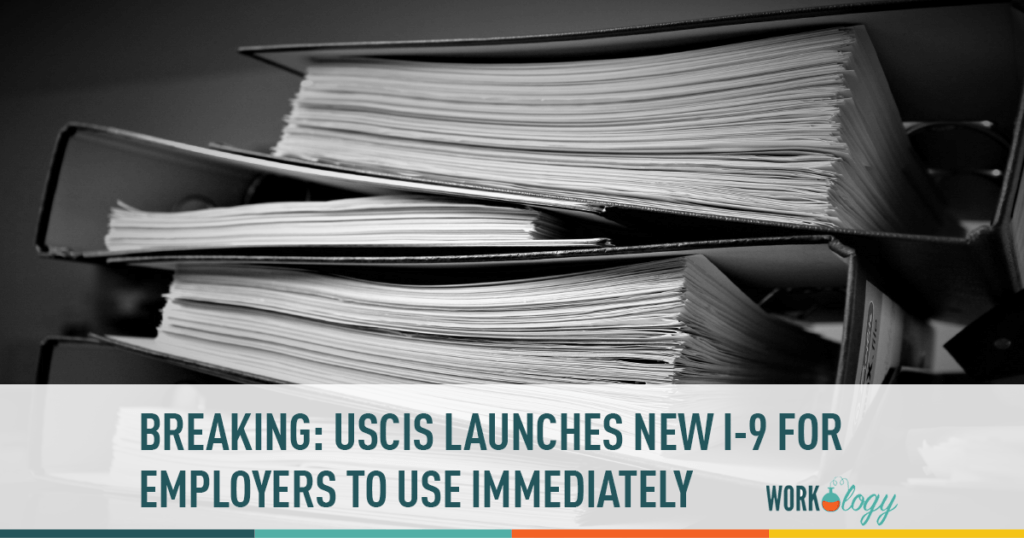U.S. Citizenship & Immigration Services (USCIS) has announced the release of a new version of the Employment Eligibility Verification, Form I-9, which is used to verify the identity and employment authorization of individuals hired to work in the United States. Employers and Human Resources staff may begin using this new Form I-9 or continue to use the current version of the Form I-9 (dated 11/14/16 N) through September 17, 2017. Beginning September 18, 2017, employers must use the new form.
New I-9 Employment Eligibility Verification Form for 2017
The revised employment eligibility I-9 form for 2017 includes some cosmetic changes, along with changes related to acceptable I-9 verification documentation, including Consular Reports of Birth Abroad. USCIS plans to update its M-274 “Handbook for Employers: Guidance for Completing Form I-9” in the near future.
This change, in addition to the recent increase in penalties for employment verification errors, is of significant importance to employers and Human Resources departments, as all U.S. employers must ensure proper completion of Form I-9 for each individual they hire.
Common I-9 Errors and Mistakes
I-9’s are an important part of the hiring and employee onboarding process. They are also an area that is easily overlooked and can be costly for employers if they don’t complete the form properly and verifying the new hire’s correct identification. Common I-9 errors and mistakes often include the following:
· Failing to complete the I-9 is the 3-day window
· Telling the employee what documentation to produce – You can only suggest and provide a list of documents as outlined in the instructions from the USCIS itself.
· Not completing the form in its entirety
· Not correcting mistakes – Entering the wrong information, the employee failing to sign or you completing the employer information are all mistakes that can cost you if there is an audit.
I-9 Audit and Form Best Practices
More importantly, as the workforce compliance landscape continues to evolve, employers should take this opportunity to evaluate their current I-9 policies and procedures to ensure they are in compliance with the latest I-9 and E-Verify rules. As part of this process, employers should:
· Review current I-9 policies and practices with qualified counsel – This includes careful analysis of all workforce compliance practices to mitigate errors and mistakes on the form
· Develop formal I-9 and E-Verify protocols for detecting, preventing, and improving against I-9 violations
· Mitigate historical I-9s with qualified counsel to help avoid against fines and penalties for certain technical or procedural errors on the forms
· Develop, implement, and maintain compliance policies for worksite raids
I-9’s are a foundational piece of the employment and HR process. Don’t wait until it is too late to use the correct form, establish a process and identify ways to mitigate risk by working with your qualified counsel.









One Comment
This blog says around which age an employee should enforce himself on doing background verification and if not what should he do for an organization is making him do verification a very important and useful topic. Thanks and keep updating.
Comments are closed.